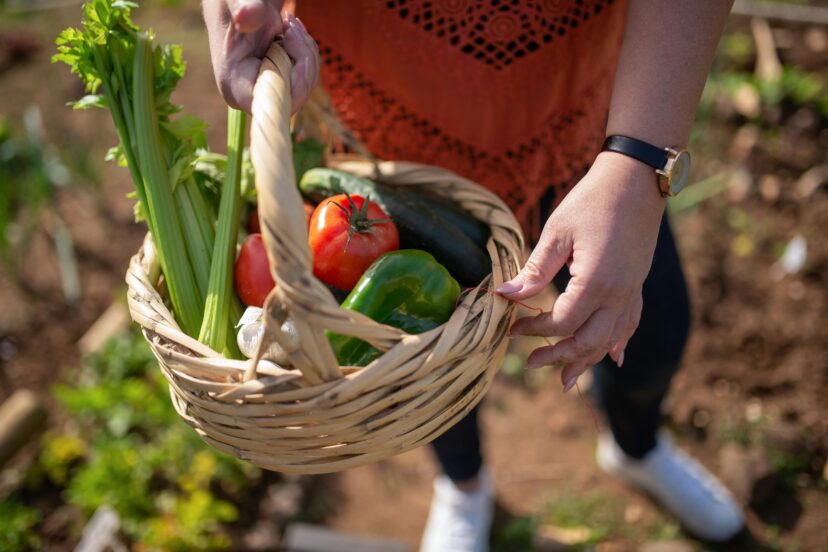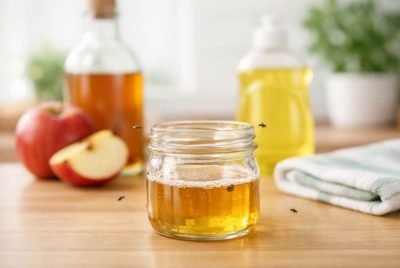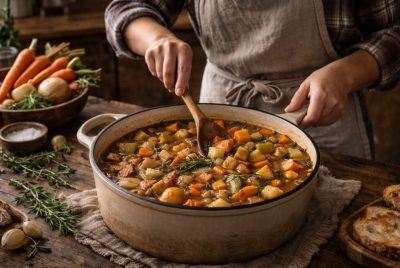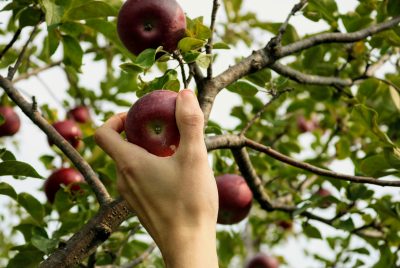Vegan Homesteading: Create a Sustainable, Cruelty-Free Life
We may earn a commission for purchases made using our links. Please see our disclosure to learn more.
Many people want to live more sustainably, but traditional homesteading often depends on raising animals — which doesn’t sit right if you’re committed to a cruelty-free lifestyle. That conflict makes it tough to feel truly self-sufficient while staying true to your values. But here’s the good news: vegan homesteading solves that problem beautifully. You can grow your own fresh produce, nurture healthy soil, and live in harmony with nature — all without exploiting animals. Whether you have a sprawling backyard or just a tiny urban plot, you can build a thriving, compassionate homestead that aligns with what you believe in.
Why Vegan Homesteading Is Worth It
Homesteading has a long history, but it is typically associated with animal farming—eggs from chickens, meat from goats, and honey from bees. For many vegans, this technique is simply not appropriate.
Raising animals for food or products violates the fundamental vegan concept of avoiding animal exploitation. Furthermore, there is growing evidence that plant-based systems are healthier for the environment. A study published in Nature Food discovered that substituting animal-based agriculture with plant-based systems might reduce greenhouse gas emissions and free up large expanses of cropland.
Recent research strongly supports the benefits of plant-based living for self-sufficiency. A comprehensive review on plant-based dietary patterns highlights how vegan diets consistently lower greenhouse gas emissions and land use. Meanwhile, an in-depth meta-review on global veganism explores how widespread plant-based farming could dramatically cut environmental impacts while maintaining food security. Together, these findings show that vegan homesteading isn’t just ethical — it’s practical and science-backed too.
Vegan homesteading is your way to live these values daily — building soil fertility naturally, growing your own organic food, and sharing excess with your community. It’s a win-win for you, the animals, and the planet.
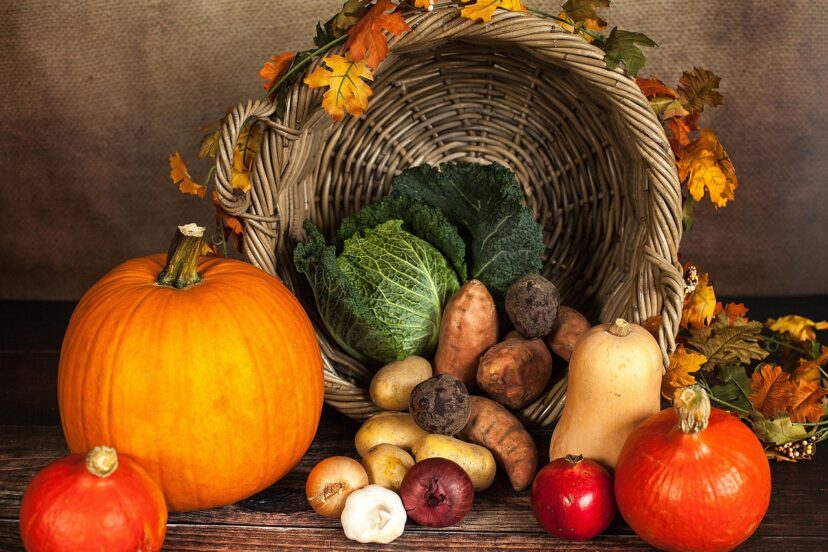
How to Start Your Vegan Homestead
Starting your vegan homestead doesn’t have to be overwhelming. Break it down into small, achievable steps:
- Assess your space: You don’t need acres. Many city dwellers make impressive gardens on balconies or urban lots.
- Learn about your local climate: What grows well where you live? Talk to local gardeners, visit farmers’ markets, or check local extension services.
- Compost like a pro: Composting is the heartbeat of vegan gardening. Build healthy soil using leaves, grass clippings, vegetable scraps, and green manure crops — no animal manures needed.
- Plan for water conservation: Rain barrels, drip irrigation, and mulching keep your garden healthy while using less water.
- Embrace organic, plant-based pest control: Neem oil, diatomaceous earth, and companion planting can keep bugs in check without harming other creatures.
Pro Tip: Connect with other vegan homesteaders online. Communities like local permaculture groups or Facebook groups are full of practical advice and friendly support.
Need general homestead basics? Take a peek at CribSteady’s Homesteaders Life guide for solid tips on setting up your land.
Must-Have Tools & Products for Vegan Homesteaders
Having the right tools saves you time, energy, and money. These Amazon picks are favorites in the vegan homesteading community:
VIVOSUN 5-Pack 10 Gallon Grow Bags – Perfect for patios or backyards. The breathable fabric supports healthy root systems.
Outdoor Tumbling Composter -Turns your veggie scraps and yard waste into rich, plant-based compost in weeks.
Garden Push Seeder – Makes sowing seeds a breeze, especially if you have larger beds.
Rain Water Collection Barrel – Collect and store rainwater naturally for your plants.
Neem Oil Spray – A gentle, OMRI-certified pest solution that won’t harm bees or other pollinators.
Each of these tools can be reused for years — a sustainable investment that keeps your homestead thriving.
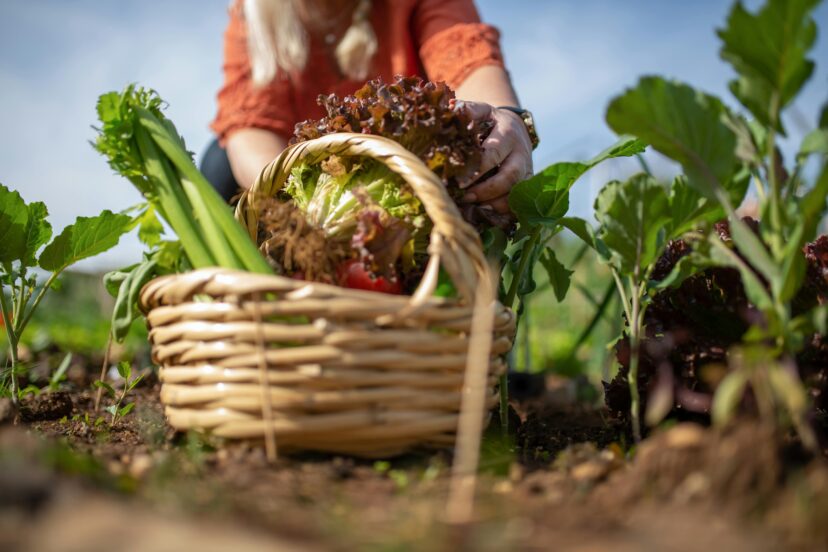
Building a Vegan Garden That Thrives
Soil is life. That’s true for any garden, but it’s especially vital for vegan homesteading.
Instead of relying on animal manures or blood and bone meals, use plant-based methods to feed your soil. Green manures like clover or buckwheat add nutrients naturally. Mulch beds with straw or leaf mold to keep moisture in and weeds out.
Want better yields? Practice crop rotation. Moving plants around each season helps prevent nutrient depletion and keeps pests guessing. Composting is the heartbeat of any vegan garden, so learn more in this DIY Composting guide to keep your soil rich and healthy season after season.
Companion planting is another vegan-friendly secret. Basil repels bugs near tomatoes, marigolds keep nematodes away from root veggies, and nasturtiums distract aphids.
And remember — diversity is your friend. Planting a mix of veggies, herbs, and flowers attracts beneficial insects and boosts resilience.
Creative Animal-Free Solutions for Everyday Needs
Vegan homesteading means thinking creatively when common methods rely on animals. Here are some practical swaps:
Fertilizers: Switch out bone or fish meal for kelp meal, alfalfa meal, or comfrey tea.
Mulch: Straw, grass clippings, shredded leaves, or cardboard are all great.
Pollination: Skip backyard honeybee hives for profit and instead grow native flowering plants. They attract local pollinators like bumblebees and butterflies.
Pest control: Floating row covers, natural sprays, and physical barriers work wonders — no need for chemicals that harm helpful critters.
It’s all about working with nature instead of trying to control it.
Common Challenges (And How to Overcome Them)
Let’s be real: vegan homesteading isn’t always picture-perfect. Here are a few bumps you might hit — and how to handle them:
Poor Soil at the Start: Don’t get discouraged. Add compost, rotate crops, and use green manures. It may take a season or two, but your soil will transform.
Persistent Pests: Some bugs are stubborn. Combine methods: physical barriers, neem oil, beneficial insects, and good garden hygiene.
Limited Space: Vertical gardening, container gardening, and community garden plots expand your growing area.
Isolation: Not everyone understands vegan homesteading yet. Find your people! Online forums, local vegan meetups, and permaculture groups are invaluable.
Remember, every mistake is a lesson — and a step closer to a flourishing homestead.
Final Thoughts
At its heart, vegan homesteading is about living true to your values while nourishing your family and community. It’s proof that sustainability and compassion can go hand-in-hand, right in your backyard. You don’t need perfection — just curiosity, patience, and a willingness to experiment. With each seed you plant, you’re choosing a kinder, more resilient future. So, pull on your boots, grab your trowel, and get growing. You’ve got this!
For more in-depth support, explore these Homesteading Programs — and start building your dream today.
FAQs
Q1: Can you really be self-sufficient without animals?
Absolutely! Many homesteaders feed their families year-round with homegrown veggies, grains, and legumes.
Q2: Do I need a lot of land to start?
Nope. Even a patio garden or community plot can kickstart your vegan homesteading journey.
Q3: How do you fertilize crops without animal products?
Use composted plant waste, green manures, and vegan-certified fertilizers like alfalfa or kelp meal.
Q4: What about bees?
Skip commercial beekeeping. Instead, plant wildflowers to help native pollinators thrive.
Q5: Where can I learn more?
Check out online vegan permaculture communities and read scientific articles like those linked above.

